#urban transportation
Text

04.2022 Istanbul
160 notes
·
View notes
Text
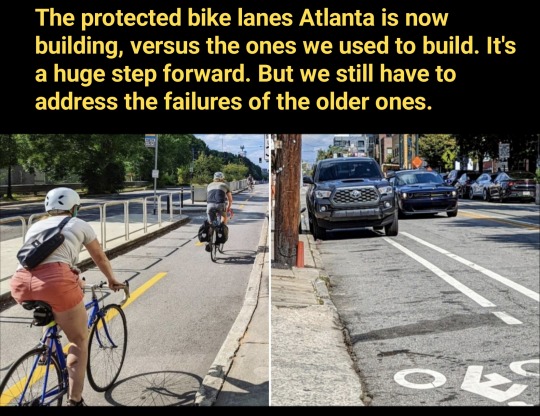
Atlanta is now producing the kind of protected bike lanes we should have been building long ago, as seen here on Bill Kennedy Way. It's good progress.
But we still need to address those older ones (like the unprotected lane on Edgewood Ave) where cars can get in.
If there's truly no room in the width of the street for a fully protected lane, I wonder if we could consider a bold redesign that slows cars dramatically and creates a safe shared space?
26 notes
·
View notes
Text
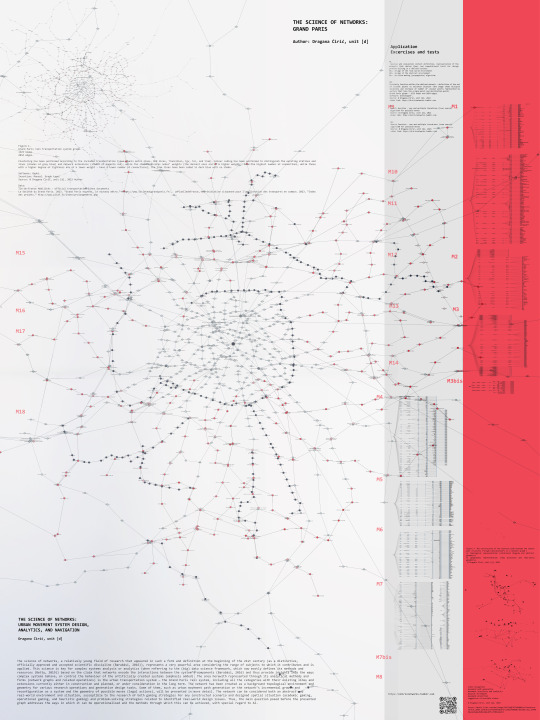
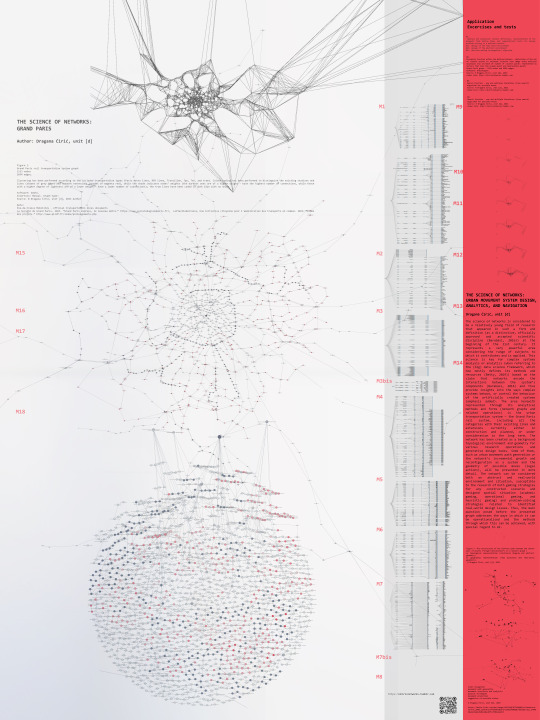
The Science of Networks: Grand Paris
©Dragana Ciric
STRAND 2023 Exhibition
On Architecture - Challenges in Design
Gallery of Science and Technology, Serbian Academy of Arts and Sciences, 5-19 December 2023, Belgrade, Serbia
#dciric#Grand Paris#Grand Paris Express#networks#network graphs#urban systems#systems design#urban mobility#urban intelligence#urban informatics#Paris rail system#paris metro#urban transportation#mobility#smart cities#artificial intelligence design methods#generativedesign#generative urbanism
2 notes
·
View notes
Text

#diversity#city life#bustling street#modern city#city#digitalart#ai#urban transportation#art#traffic#aiart
0 notes
Text
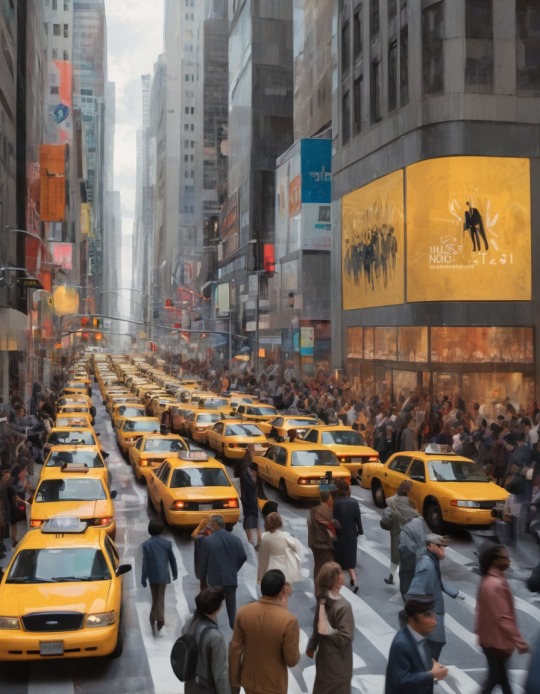
#modern city#art#rush hour#digitalart#ai#modern architecture#bustling streets#aiart#city life#city#urban transportation
0 notes
Text
Join Black Folks on Bikes for Environmental Justice
Join Black Folks on Bikes for Environmental Justice
At Strategy and Soul
The Strategy Center is excited to be one of eight organizations in the South-Central LA Power Up coalition working with the California Air Resources Board, LA Dept of Transportation, and LA Clean Tech Incubator to host a library of 250 E-Bikes that will be free for South LA residents for the first 6 months of the…

View On WordPress
#bike library#bus riders union#CARB-Step#E-bikes#ebikes#Free Public Transit#Free Public Transportation#LA Clean-Tech Incubator#Labor Community Strategy Center#LACI#no cars in l.a.#South Central#South Central Power Up#Strategy and Soul#The Strategy Center#Urban Transportation
0 notes
Text
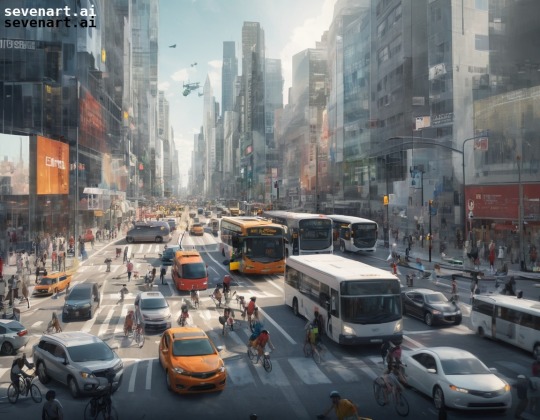
#modern architecture#art#ai#modern city#cycling#city life#digitalart#city#urban transportation#aiart#traffic congestion
0 notes
Text
Explore Tata CityRide: A Reliable Solution for Urban Transportation | Tata Motors Buses

Discover the versatile Tata CityRide, designed for seamless urban transit. Explore its features, specifications, and applications. Find your urban mobility solution with Tata Motors Buses.
0 notes
Text
youtube
Urban Planning YouTube Sucks
So, I am a big fan of urban planning. City planning, and transportation in particular, is possibly my oldest passions. Born in Los Angeles, I was drawing pictures of freeways before I could read or write. I am really interested in the mass movements of people within cities, and I recognize (like few do) that personal mobility is one of the fundamental pillars of our modern way of life.
So, for a while, I enjoyed watching content about this on YouTube. But gradually these content creators poisoned the well for me—see my post a little while back about coming to recognize that most YouTube documentarians are not credible. The video I have linked above is the first video, albeit obliquely, that I have seen to call out urban planning YouTube from a legitimate perspective (i.e., not from the right-wing perspective of "mass transit should be illegal and bicyclists executed by firing squad").
The later part of his video is what really touches on my problem with "urban planning YouTube." I still watch City Beautiful on occasion, because it's a good channel and doesn't commit many of the wrongs that are almost ubiquitous in the broader urban planning YouTuber community, but I have actively given up on any of the other channels this video mentions (and several others), for two reasons:
One is actually the reason this video touches on toward the end: Most of these urban planning YouTubers come across as the sorts of clueless, privileged, holier-than-thou liberals who think they know it all but don't, and don't actually want to do any of the hard work of engaging in civic advocacy. They give the rest of us on the left a bad rap, while also replacing real activism with slacktivism in the minds of people who think that learning about the existence of problems is enough. It's not. In fact, on the contrary, learning about the existence of problems often creates an ethical obligation to do something about them. But this angle is continually lost in favor of trash-talking American (and Canadian) cities and urban planning, which comes across to me as mean-spirited and is a really toxic pairing with the aforementioned holier-than-thou, overprivileged element.
The second reason is one not mentioned in the linked video, and one that its creator would probably disagree with me on: Most of these YouTubers aren't actually objectively correct in their theses. They have a well-considered view, and that's it. There are other ways to plan cities, other well-considered views, and the existing transportation models we have in much of the US today aren't as horrible as they often claim. American cities are built around maximizing mobility, and that is a huge net positive both to societal prosperity and to personal opportunity. It's one of the reasons why America is more productive than Europe. Urban planning YouTubers present facts about the disadvantages of our SOV-based (i.e. personal car) transportation paradigms relatively well (though not always), but misrepresent their interpretation of those facts as also being factual, and also overextend the application of these facts to form larger arguments, and these acts are just plain dishonest and show either an intention to deceive their audiences or else an ignorance of their chosen subject matter. Either way, it discounts the validity of their opinions and in so doing does a disservice to people who hold those same views more genuinely.
Combining these two reasons synthesizes my personal revulsion to most of these creators: I am poor and not in a position to purchase whatever transportation solution I would prefer to incorporate into my lifestyle (let alone leave my city or perhaps my entire continent outright just to immigrate somewhere where these clowns insist that I'll be much happier simply because the transportation systems are more in line with what they want). I resent when economically comfortable people think that everybody else is in their same economic position and can approach the issues of basic personal mobility from a middle-class perspective. By definition most people cannot. When they tell me with a straight face that I should just bike everywhere, or that vital main arterial roadways (which they slander as "stroads") should be shut down so as to become unusable in their intended function, to me that is clownishness incarnate. It is utterly clueless, utterly pretentious, utterly ignorant.
I am honestly open-minded about this stuff. I am genuinely willing to listen to arguments for changing the ways we move people within cities. That's why I gave many these channels a chance in the first place. But what pushed me away is that their "enlightened" vision has no place for people in my circumstances and would also be seriously harmful to the cities they are trying to improve in the form of reduced mobility within cities, which hurts both individuals and businesses. And some of their arguments are reductive, like the insinuation that low-density cities can advantageously transition away from cars, or that induced demand is unlimited and ultimately makes traffic the same or worse as it started out as (which is false on both counts).
I don't speak out about it much (in fact this might be the first time) because it's far down the list in the battles I would pick, and currently the forces of NIMBYism and do-nothing-ers in America are completely dominant, so it's not really such a big deal—and even does some good—that we have people chipping away from that with different ideas that are also pretty dubious. But at the end of the day I'll never actually be able to sign on board with a lot of this stuff. The United States is never going to become the Netherlands, nor should it try. There are ally opportunities for me to align with these folks on specific issues where we do hold similar positions, but our visions are incompatible. I want personal mobility (i.e., I can go anywhere within a city) and urban accessibility (i.e., any part of a city is reachable) to continue to be the top priorities of urban transportation systems, and in the American paradigm that will always include private motor transport and the roadways to serve it. Urban planning YouTubers don't want that; their top priority is fewer cars, more walkability, and more bikeability—which is, charitably, a stand-in for "more pleasant cities."
#Urban planning#Urban transportation#Urban planning YouTube#YouTubers are often a poor source of information and solutions#Youtube
0 notes
Text
Rush Hours Jakarta.

0 notes
Text
Smart Cities and AI-Powered Traffic Management

In the ever-evolving landscape of urban development, the fusion of technology and city planning has given rise to the concept of "Smart Cities." In this article, Daniel Reitberg ventures into the realm of Smart Cities and their transformative approach to traffic management, made possible by the integration of artificial intelligence.
The Growing Challenges of Urban Traffic
As cities around the world continue to expand, traffic congestion has become a ubiquitous issue. Daniel Reitberg underscores the importance of addressing this challenge not only for the convenience of city dwellers but also for reducing pollution and improving overall urban quality of life.
AI's Role in Traffic Management
Artificial intelligence is at the heart of Smart Cities' efforts to manage traffic efficiently. Daniel Reitberg delves into how AI-powered algorithms can analyze vast streams of traffic data in real time. This analysis helps city planners make informed decisions, such as optimizing traffic signal timings or rerouting vehicles to alleviate congestion.
Predictive Analytics for Traffic Flow
Predicting traffic patterns is a crucial aspect of AI-powered traffic management. Daniel Reitberg discusses how AI can forecast traffic conditions based on historical data, events, and even weather. By doing so, cities can proactively manage traffic, preventing bottlenecks and reducing commute times.
Enhancing Public Transportation
Smart Cities prioritize sustainable modes of transportation. Daniel Reitberg explores how AI can improve public transit systems. AI-powered algorithms can optimize bus routes, predict arrival times, and even adjust schedules in response to real-time demand, making public transportation more attractive and efficient.
AI-Powered Traffic Safety
Traffic safety is a paramount concern in any urban environment. Daniel Reitberg highlights how AI's capabilities extend to monitoring and enhancing safety. AI-powered cameras and sensors can detect accidents, traffic violations, and even potential hazards, enabling swift responses from authorities.
The Human Element in AI Traffic Management
While AI plays a pivotal role in Smart City traffic management, Daniel Reitberg emphasizes that it works in tandem with human expertise. City planners, traffic engineers, and law enforcement personnel collaborate with AI systems to make critical decisions and ensure the safety and well-being of citizens.
Challenges and Ethical Considerations
The adoption of AI in traffic management comes with challenges, including data privacy and cybersecurity concerns. Daniel Reitberg discusses these issues and underscores the importance of transparent and ethical AI practices in Smart Cities.
The Future of Smart Cities
In conclusion, Daniel Reitberg's exploration of AI-powered traffic management in Smart Cities paints a vision of urban living that is more sustainable, efficient, and livable. As technology continues to advance, the integration of AI in city planning promises to make our cities not only smarter but also more people-centric, creating environments that prioritize the well-being of their inhabitants.
#artificial intelligence#machine learning#deep learning#technology#robotics#autonomous vehicles#smart city#traffic management#traffic safety#public transportation#urban transportation
0 notes
Text
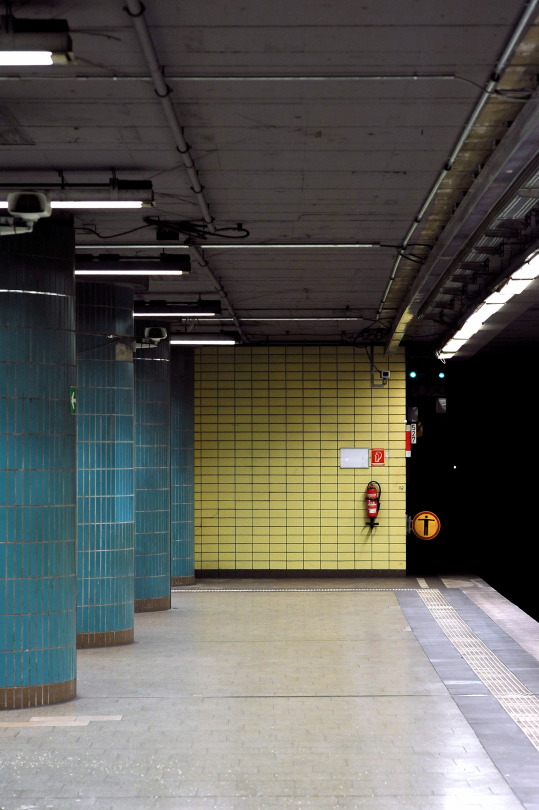
05.2014 Hamburg
#photographers on tumblr#blue tiles#yellow tiles#before renovation#s-bahn landungsbrücken#urban transportation#hamburg#©p.mandelkow
123 notes
·
View notes
Text
The Atlanta Beltline is crowded because it's too rare
We went to lunch on the Beltline with some people who were visiting from NYC today.
They told us they were surprised to see fast-moving cyclists sharing the path with pedestrians. And sure enough we did see some conflicts.

I guess I've gotten fairly used to it. I don't really think much about the mix of the two speeds until it's really crowded and someone ends up taking a spill off their bike or scooter.
But I can understand how it may seem like a bit of a mess to the uninitiated.
Mostly, it cements my opinion that the main solution to crowding on the Beltline is to make the surrounding streets safer for walking and cycling, so that this one path doesn't bear such a heavy weight for serving the needs of Atlantans who want to get around without a car.
Someone once said Americans are so starved for walkable urbanism that if you put three nice blocks together it becomes a tourist attraction.
I think a similar thing could be said about the Beltline. We're starved for nice places to walk and bike and skateboard and ride scooters, especially where actual destinations exist -- versus a PATH trail that has few destinations alongside it.
Redesign streets to serve this purpose too.
#atlanta#atlanta beltline#urbanism#walkability#pedestrian infrastructure#bike infrastructure#urban design#urban transportation
51 notes
·
View notes
Text
Riding the Future: India Gasoline Scooter and Motorcycle Market Trends and Sustainable Mobility Solutions
In India, electric scooters and motorcycles are rapidly coming onto the roads, whereas gasoline ones are still leading the automotive industry. This is due to the large number of gasoline stations, road infrastructure, and low cost as compared to EVs.
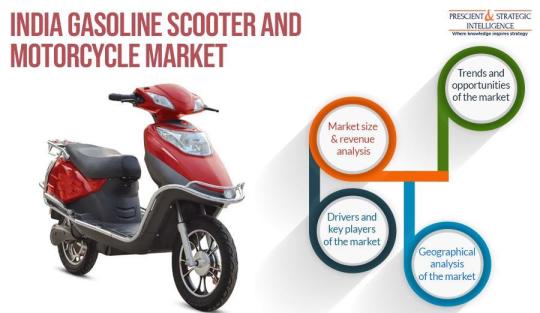
Therefore, the Indian gasoline scooter and motorcycle market is expected to grow at a significant CAGR in the coming years. This is also due to the increasing income levels and the rising needs from tier 2 and tier 3 cities in the country. Moreover, people are further encouraged to buy these automobiles by factors such as simpler financing choices, fuel-efficient versions, and steep discounts on these vehicles.
Additionally, despite owning personal vehicles, a lot of individuals are buying two-wheelers for shorter commutes since they are simple to operate and park in crowded locations. Due to this, two-wheelers are quickly becoming a second mode of transportation in Indian families. These automobiles run on gasoline and are considerably smaller and lighter than passenger cars. As a result, they are a wonderful choice for traveling on busy and congested highways, particularly in a nation like India.
The major product category in the Indian automobile industry is motorcycles. This is because the country has a relatively high motorbike ownership rate of 108 bikes per 1,000 people.
Ranges for electric cars vary from 200 km to 300 km. It is not a problem because it has a regenerative drive in the city and can recover there; on the highway, however, it merely drains. If there were more chargers accessible, it wouldn't be a problem, however, that isn't the case now. Additionally, it is challenging to plan a road trip in an EV due to the scarcity of charging stations.
#India Gasoline Scooter and Motorcycle market#two-wheeler revolution#market analysis#scooter and motorcycle innovations#market trends#urban transportation#market dynamics#personal mobility#Gasoline Scooter and Motorcycle market outlook in India
0 notes
Text
Bike Lanes and Beyond: Innovations Shaping the Future of Cycling in Urban Landscapes
In the ever-evolving landscape of urban design and transportation, the resurgence of cycling has captured the imagination of city planners, environmentalists, and health-conscious citizens alike. As urban areas grapple with congestion, pollution, and the imperative to create more sustainable modes of transportation, the humble bicycle has risen to the forefront of discussions. However, it’s not…

View On WordPress
#bike-sharing#bikes#citi bike#e-bikes#eco-friendly#micromobility#smart bike lanes#sustainability#urban mobility#urban planning#urban transportation
0 notes
Text
[vc_row][vc_column][vc_single_image image=”7298″ img_size=”full” alignment=”center”][vc_column_text css=”.vc_custom_1701240254479{margin-bottom: 0px !important;}”]
Join the Strategy and Soul Pit Stop at Ciclavia South LA
THIS SUNDAY Dec 3rd 2024
9am-3pm
We’re excited to host a Pitstop at CicLAvia South LA this Sunday December 3rd 2023 9am-5pm.
The Strategy Center has fought for a car-free city…

View On WordPress
#Akunna Uka#Barbara Lott Holland#bus riders union#Channing Martinez#Eric Mann#Fight for the Soul of the Cities#Free Public Transit#Free Public Transportation#LA Metro#Labor Community Strategy Center#LACMTA#Metropolitan transportation Authority#Strategy and Soul#Strategy and Soul event#The Strategy Center#Urban Transportation
0 notes